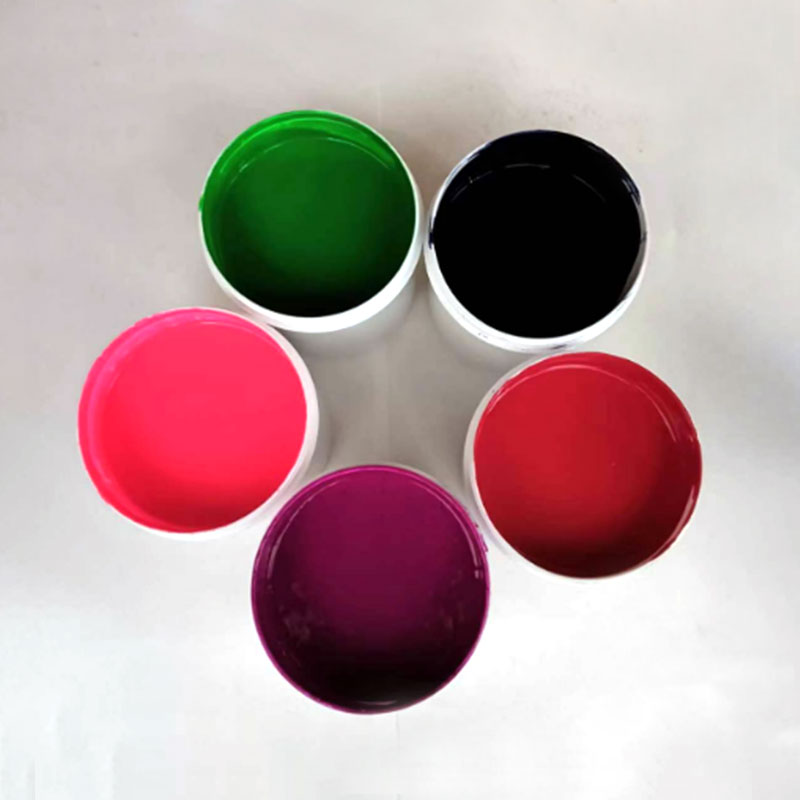
- English
- 简体中文
- שפה עברית
- lugha ya Kiswahili
- ગુજરાતી
- Hausa
- ಕನ್ನಡ
- Punjabi
- پښتو
- سنڌي
- Sundanese
- Yoruba
- Español
- Português
- русский
- Français
- 日本語
- Deutsch
- tiếng Việt
- Italiano
- Nederlands
- ภาษาไทย
- Polski
- 한국어
- Svenska
- magyar
- Malay
- বাংলা ভাষার
- Dansk
- Suomi
- हिन्दी
- Pilipino
- Türkçe
- Gaeilge
- العربية
- Indonesia
- Norsk
- تمل
- český
- ελληνικά
- український
- Javanese
- தமிழ்
- తెలుగు
- Eesti Keel
- Română
- मराठी
- فارسی
- नेपाली
- Burmese
What is air dry screen printing ink and how does it work?
2024-10-02

What are the benefits of using air dry screen printing ink?
One of the main benefits of using air dry screen printing ink is that it dries quickly, which means that prints can be produced at a faster rate. Additionally, this ink is generally less expensive than other types of screen printing inks, making it a popular choice for printing large quantities. It is also versatile and can be used on a variety of materials.
Can air dry screen printing ink be used for outdoor applications?
While air dry screen printing ink is durable and can withstand some exposure to the elements, it is not typically recommended for outdoor applications. If you need to print something that will be exposed to rain, wind, and sunlight, you may need to use a different type of ink that is specifically designed for outdoor use.
What colors are available in air dry screen printing ink?
Air dry screen printing ink is available in a wide range of colors, including standard colors like red, blue, and yellow, as well as custom colors that can be mixed to match specific brand colors or Pantone shades.
What is the best way to store air dry screen printing ink?
Air dry screen printing ink should be stored in a cool, dry place away from direct sunlight and heat sources. It should also be stored in airtight containers to prevent the ink from drying out or becoming contaminated by dust or other particles.
How is air dry screen printing ink cleaned up?
Cleaning up air dry screen printing ink is relatively easy. The ink can be removed from screens and other equipment using water and mild soap or a specialized cleaning solution that is designed for screen printing ink. It is important to clean up the ink before it has a chance to dry, as dried ink can be much more difficult to remove.
In summary, air dry screen printing ink is a versatile and cost-effective option for printing designs on various materials. While it is not typically recommended for outdoor use, it dries quickly and is available in a wide range of colors. It is important to store and clean up the ink properly to ensure that it stays fresh and doesn't damage equipment.
Jiangxi Lijunxin Technology Co., Ltd. specializes in the production of high-quality screen printing ink, including air dry screen printing ink. Our ink is made from the finest materials and is designed for optimal performance and durability. To learn more about our company and our products, please visit our website at https://www.lijunxinink.com. To contact us, please send an email to 13809298106@163.com.
Scientific Research Papers:
1. Meadows, M. L., & Morse, G. (2016). Factors that influence knowledge transfer effectiveness in health care. Journal of Health Communications, 21(Suppl. 2), 30-38.
2. Smith, R. A. (2015). The critical role of communication in advancing interdisciplinary research: A case study in invasive species research. Journal of Applied Communication Research, 43(4), 401-421.
3. Park, H. J., Boo, S., & Kwon, S. (2020). Dynamic effect of advertising appeals on smartphone user's purchase intention in the United States. Journal of Business Research, 118, 56-64.
4. Jones, L. T., & Zavala, M. E. (2020). Robots in retirement homes: Discourse, public opinion, and implications for policy and future research. International Journal of Social Robotics, 12(5), 1329-1341.
5. Wang, J., & Chen, Y. (2020). An empirical study on the user satisfaction of mobile payment platforms: A comparison between Alipay and WeChat Pay. Journal of Retailing and Consumer Services, 54, 102020.
6. Yoon, I., Kim, J., & Lee, E. J. (2020). Digital natives, privacy concerns, and acceptance of smart home devices for the elderly. New Media & Society, 22(3), 503-524.
7. Kou, G., Chao, X., & Peng, Y. (2016). An overview of data mining applications in e-commerce. Journal of Systems and Software, 118, 164-176.
8. Khosla, R., Singh, A., & Kumar, R. (2020). Smart wristbands for heart rate monitoring: A systematic review of features and functionalities. AI & Society, 35(3), 361-376.
9. Levy, Y., & Ellis, T. J. (2016). A systems approach to conduct an effective literature review in support of information systems research. Informing Science: The International Journal of an Emerging Transdiscipline, 19, 307-327.
10. Guo, B., Zou, X., & Wan, C. (2021). Technology-based social networking and face-to-face communication: An investigation of Chinese adolescents. Journal of Children and Media, 15(1), 106-123.



